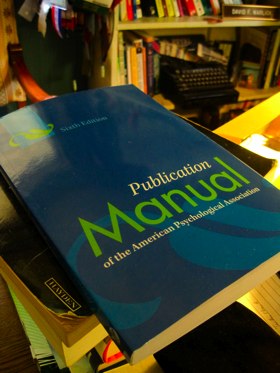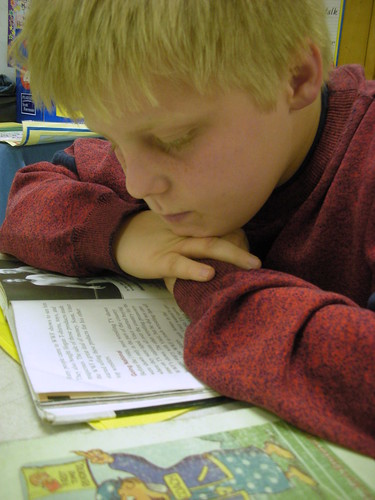

I crave routine. For the past week and a half, I have started my morning with a bowl of Cream of Wheat (It’s better than grits) followed by a mile walk to the local Starbucks, a bag (above) over my shoulder. Unpacked, I have my mobile office — Acer Netbook with Ubuntu waiting for login, a wireless mouse, and a mug of Cafè Americano. I’m writing a new book about network professional development — how learning is like gardening 😉
Tim Holt recently wrote an interesting entry (Do I Trust the System Enough) in his blog, Intended Consequences. In it, Tim describes his plans to write a book for administrators about a particular type of professional development. He is planning to follow my example of self-publishing the book, hopeful that “..enough people purchase it so that (he) can put (his) kids through college.” My experience with self-publishing has been almost entirely positive and fruitful. I’ll never make a living at it, and I’m still working on my son’s tuition, but writing for yourself is a true pleasure.
His central question, however, is an interesting one — a “test of faith.”
I talk a lot about collaborative work. I talk a lot about sharing. I talk a lot about using professional networks to enhance learning and your professional work. So here is a perfect example of something that I can put “out there” for my PLN to critique, add to, subtract from, tell me I am full of it, or give me a pat on the back. I want folks to work with me through the process, to share, to be part of the product. Everyone would get credit.
There are a number of notable examples of books written publicly on wikis or in similar environments. I’m not absolutely sure, but it seems that one or more of Lawrence Lessig’s books were written publicly, as was Chris Anderson’s The Long Tail, through his blog.
But Tim is concerned.
..I just hesitate putting it out there because I keep thinking that it is going to be ripped-off before it is done and someone will take my idea and run with it.
I’ll say here that I have been working on a short (hopefully) book about networked professional development for a little over a week now, trying to take advantage of an almost three week stint with no traveling. I explained a little more about the project in my comment on Tim’s blog.
But that asside, I also tell a story where several years ago someone (I do not recall who) sent me a package with a note asking if I was aware of this. The note indicated the page number, in a paperback book enclosed in the packaging, for a chapter which was, word for word, an article I had written a few years earlier and published through a now defunct online journal. I was furious and immediately shot off an e-mail to the publishers, who were in India. There was never a reply to that e-mail. I quickly settled down, realizing that there was nothing I could do that would be worth the expense, and I forgot about the whole episode until now.
Things are different now, aren’t they? India is not nearly so far away. I would probably have no more success with the publishers. But today, I have a blog. And many of the readers of my blog have their own blogs. And we could fill the edu-blogosphere with our indignation about an instructional technology book that so blatantly plagiarizes the work of another.
I think that Tim has a valid concern. He is talking about investing a lot of work into a project — A LOT OF WORK, and he has a right to be concerned about the property that will result. But our community is so much more transparent today that if I were considering writing my book publicly, fear of theft probably wouldn’t stop me.
Powered by ScribeFire.
 I do not usually pass things on that come to me via e-mail labeled, “Your readers might be interested in…” But this would certainly be worth it of you won…
I do not usually pass things on that come to me via e-mail labeled, “Your readers might be interested in…” But this would certainly be worth it of you won…
























